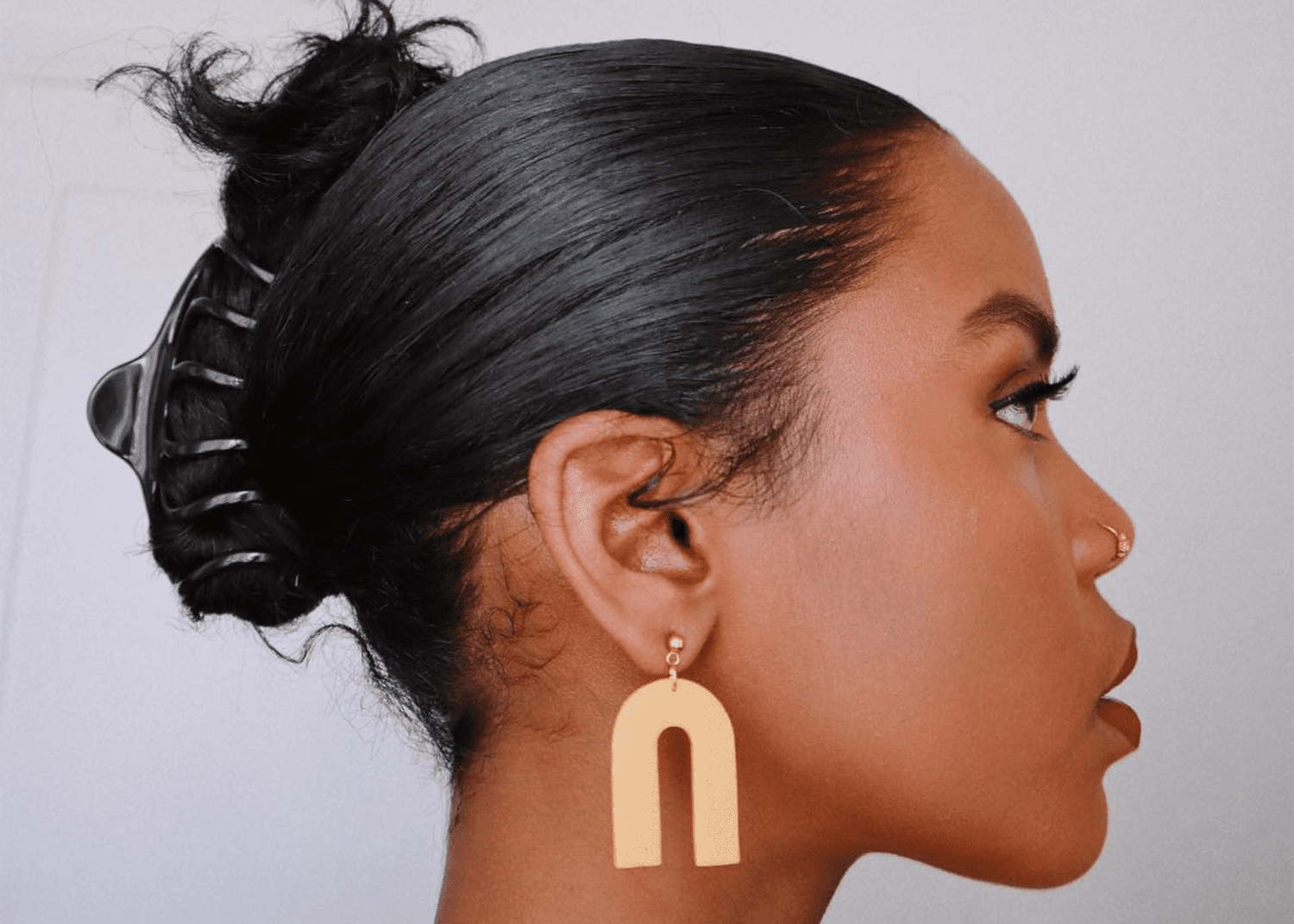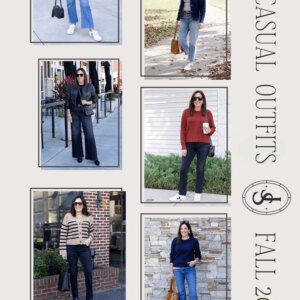Close 
@rahelbrhane_/Instagram
In the ’80s and ’90s, scrunchies became the It-girl hair accessory because they offered a simple solution to pulling back strands in a stylish way. Today, that same principle is exactly why the convenience of the claw clip has taken over the internet.
Hair in your face? Throw it in a clip. On day three hair and not quite ready to wash it? Throw it in a clip. Looking for a casual updo style but don’t want the crease of a hair tie? Throw it in a clip. You understand the premise.
That being said, pulling back your hair can potentially cause some damage, specifically leading to breakage (I’m talking to you, slicked-back bun). So, does a claw clip pose the same risk? We asked the experts to find out. Ahead, learn everything there is to know about claw clips and how to wear them most effectively.
Meet the Experts
- Michelle Cleveland is a hairstylist and owner of the New Jersey-based salon Hair Addicts Salon & Extension Bar.
- Dr. Mina Amin is a Los Angeles–based dermatologist at California Dermatology Specialists.
- Jennifer Korab is a celebrity hairstylist, colorist, and educator.
What Are Claw Clips?
“A claw clip is a hair accessory used to hold hair in place,” says Dr. Mina Amin, a Los Angeles-based dermatologist. “It features a spring-loaded hinge with two curved, toothed jaws that grip the hair. The “teeth” interlock when the clip is closed, allowing it to hold a section of the hair. Claw clips are popular for creating quick, casual updos or half-up styles and come in various sizes and materials, ranging from plastic to metal.”
Claw clips are considered to be one of the most popular hair accessories because of how versatile they are. The unique shape of the clip allows for endless style options from a secure ponytail to a half-up half-down look.
Can Claw Clips Damage Your Hair?
More often than not, our favorite styling tools and trends can lead to damage or breakage in hair. Breakage, in the most severe case, can cause hair loss. So it is important to understand the risks ahead of time. “Any hair accessory can damage the hair if used excessively or improperly and claw clips are no exception,” explains Michelle Cleveland, owner of Hair Addicts Salon & Extension Bar. “When using a claw clip refrain from pulling the hair too tight and clipping them in the same spot daily. This can cause hair to break.”
Similarly, if you are a creature of habit and tend to wear the same style daily, be aware of potential long-term effects. "Tight elastic hair ties can create tension on the hair shaft, leading to breakage and thinning, especially when worn repeatedly in the same spot," says celebrity hairstylist Jennifer Korab. "Metal hair clips have sharp edges that can snag and pull at the hair. This can cause split ends and weaken strands over time. Claw clips, especially if used repeatedly or too tightly, can create pressure points on the hair, leading to breakage or tension at the roots."
The Safest Ways to Use Claw Clips
The good news is that all the experts agree that claw clips can be worn safely. How does one do that? Cleveland suggests simply gathering the hair gently, twisting it up against the scalp, then securing it with a claw clip. Make sure that your style is secure but not too tight that it creates continued tension in your hair. Lastly, avoid leaving the clip in the same spot over and over again. This will further limit any chances of chronic breakage in a specific area.
Be mindful of your claw clip's design. While sharp pointed edges might match the vibe of your look, it could lead to a less comfortable style. "Choose claw clips with smooth edges to prevent snagging and minimize hair damage while styling," suggests Korab.
Lastly, Dr. Amin offers another angle of safely wearing a claw clip, beyond the realm of hair health. "It’s advisable to avoid wearing a claw clip when driving because it can interfere with your comfort and safety," Dr. Amin says. "Claw clips tend to stick out from the back of your head, which can push against the headrest. This may cause discomfort, affect your posture, or prevent you from resting your head properly, which could limit head movement and reduce your ability to check blind spots or react quickly. In the event of a sudden stop or accident, the clip could also pose a risk of injury if it presses against your head or neck. For safer driving, it's better to opt for a lower or less bulky hairstyle."
Alternatives to Claw Clips
If you have a long drive and want the hair out of your face, or perhaps claw clips don't suit you, the experts have recommendations for backups.
- Bobby Pins or Hair Combs: Cleveland recommends bobby pins and hair combs to secure the hair in a similar manner.
- Silk Scrunchies: Dr. Amin recommends silk scrunchies, noting that they are soft and may help reduce friction against the hair and frizz compared to standard hair ties. “Silk scrunchies also tend to not leave creases in the hair,” she adds.
The Takeaway
Be mindful when using claw clips, just as you are with any other hair accessory. When used the right way, the clip offers an easy and simple way to pull your hair back on the go. However, be careful about how tight you pull back your hair, how often you wear the same style, and any design elements that might lead to further breakage.

